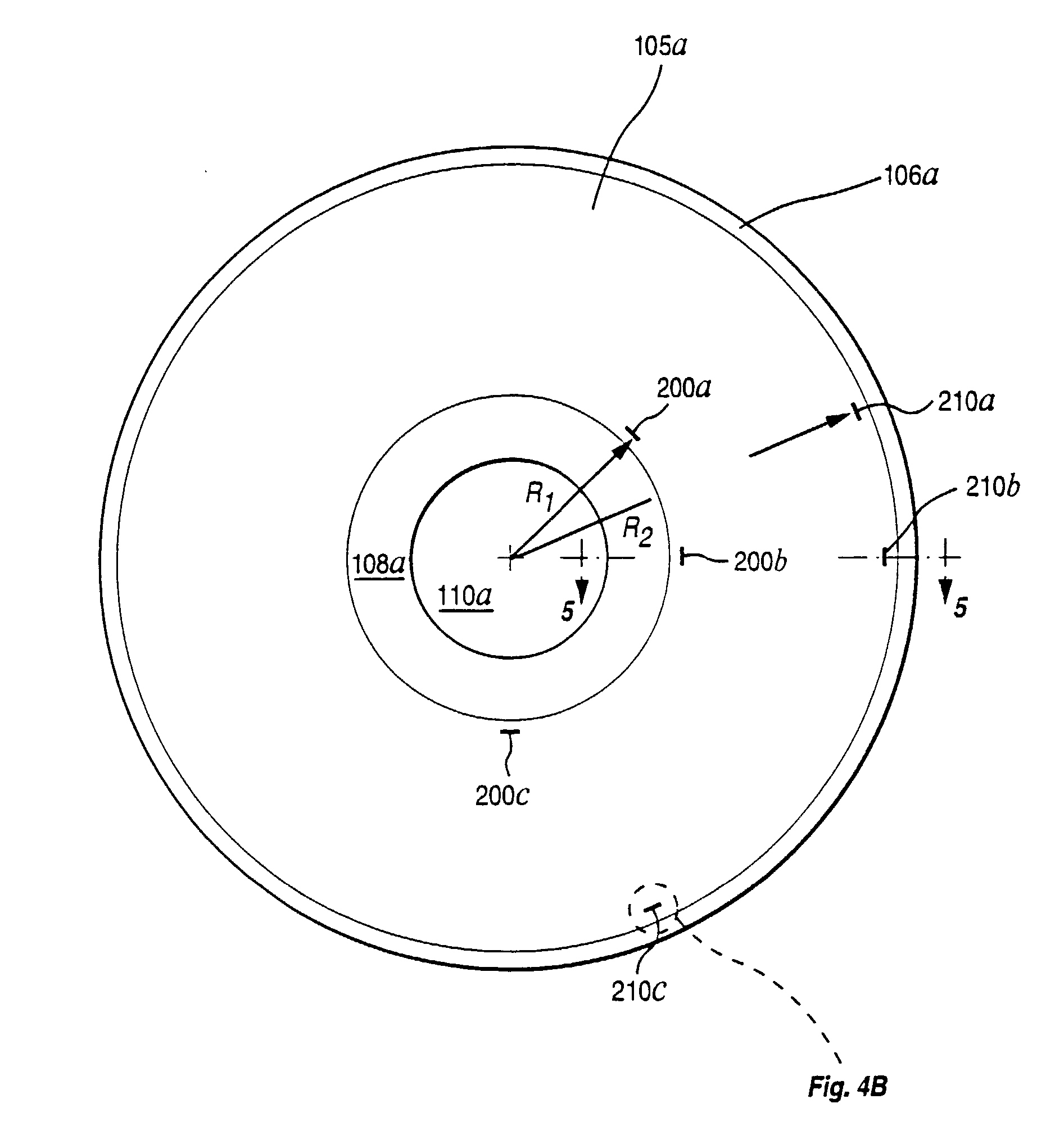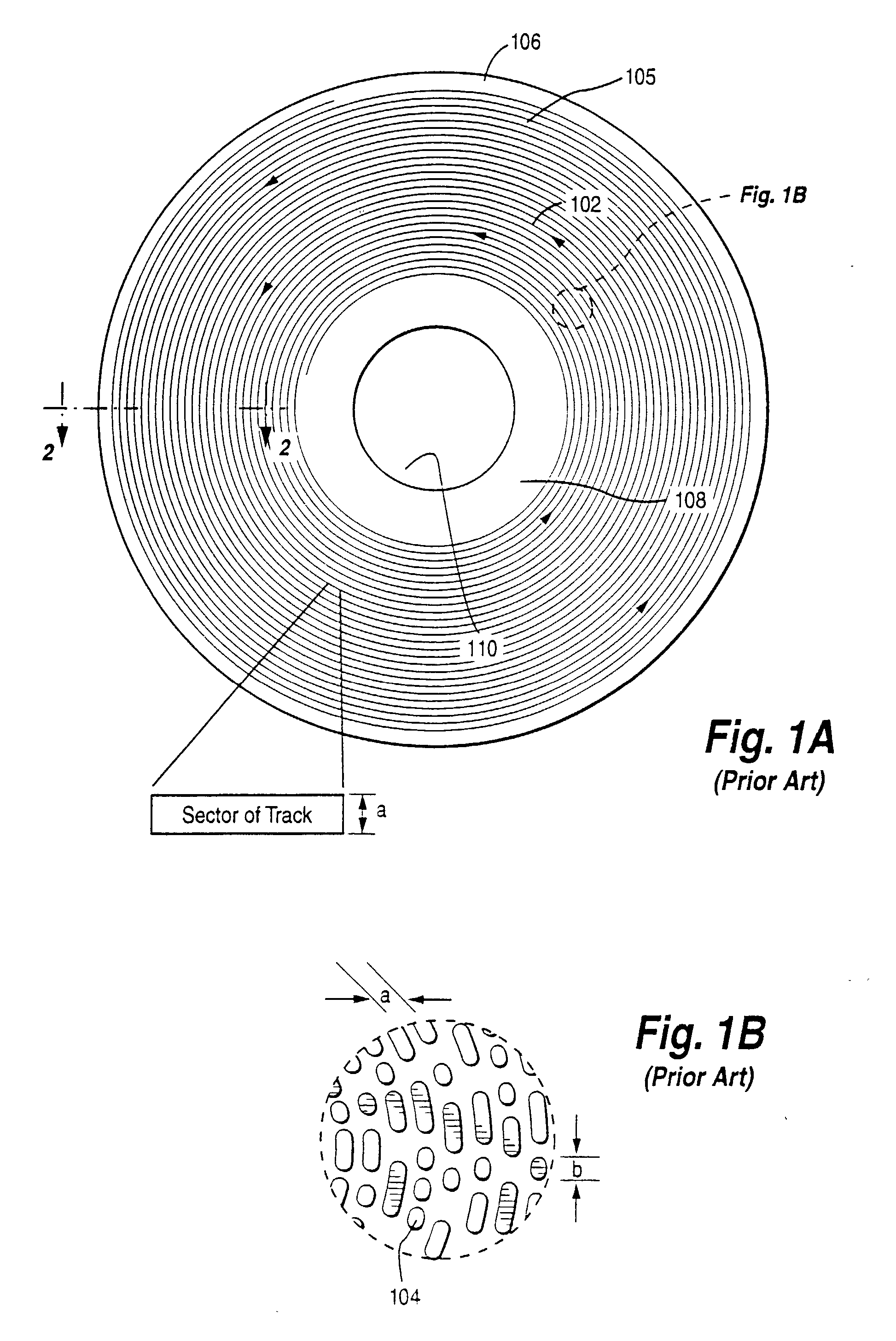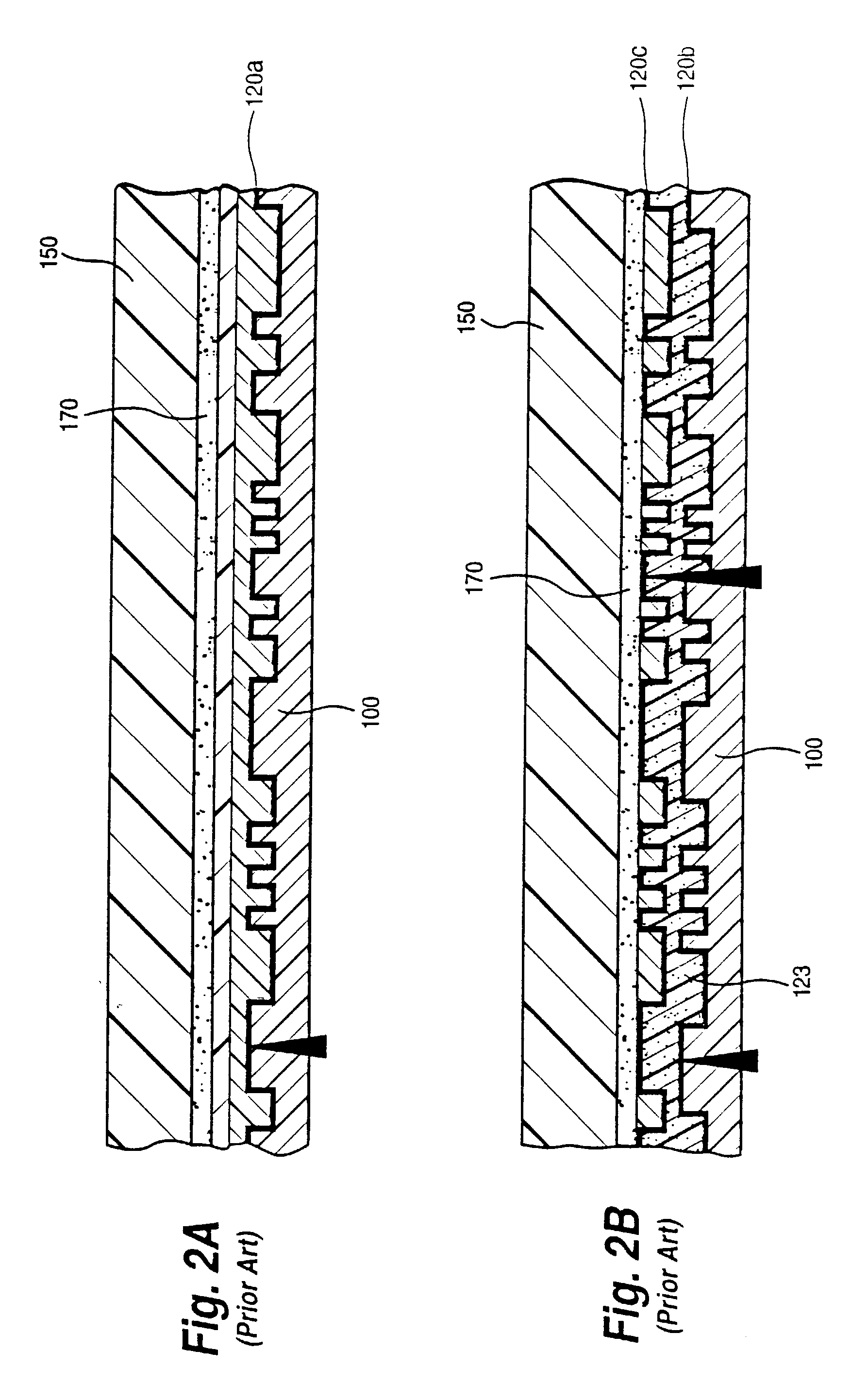Limited use DVD-video disc
- Summary
- Abstract
- Description
- Claims
- Application Information
AI Technical Summary
Benefits of technology
Problems solved by technology
Method used
Image
Examples
Embodiment Construction
[0064] FIGS. 1A-1B and 2 illustrate a conventional DVD including two distinct circular pieces of molded plastic 100, 150 that are bonded or glued together by an adhesive layer 170. Starting from the center of the disc, the disc includes a center hole 110 for mounting the disc into a DVD reader, an unused center area 108, a data area 105 for storing user data and error correction data, and an unused outside area 106. The data area 105 comprises one or more storage layers, each storage layer having a single track 102 that spirals around the disc. The spirals of each track contain microscopic bumps (or pits) for encoding recorded data. Each storage layer also includes a reflective layer 120 arranged over the track, including the bumps contained in the track, to reflect a laser light from the DVD reader so that the data recorded in the track can be read.
[0065] The total diameter of a typical currently used disc is either 12 cm (as shown in FIG. 1A) or 8 cm and the total thickness of the...
PUM
 Login to View More
Login to View More Abstract
Description
Claims
Application Information
 Login to View More
Login to View More - R&D
- Intellectual Property
- Life Sciences
- Materials
- Tech Scout
- Unparalleled Data Quality
- Higher Quality Content
- 60% Fewer Hallucinations
Browse by: Latest US Patents, China's latest patents, Technical Efficacy Thesaurus, Application Domain, Technology Topic, Popular Technical Reports.
© 2025 PatSnap. All rights reserved.Legal|Privacy policy|Modern Slavery Act Transparency Statement|Sitemap|About US| Contact US: help@patsnap.com



